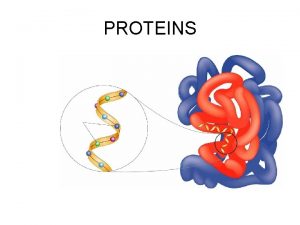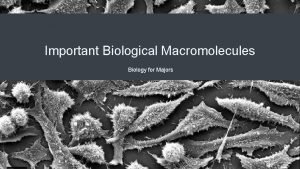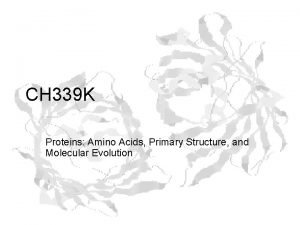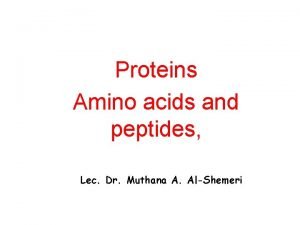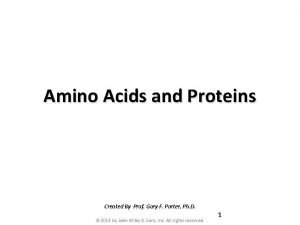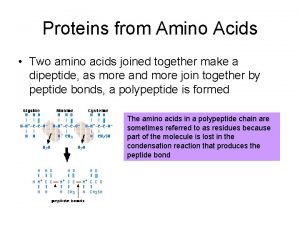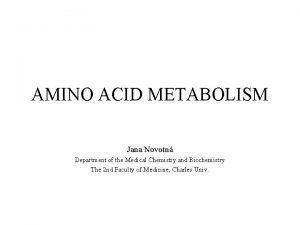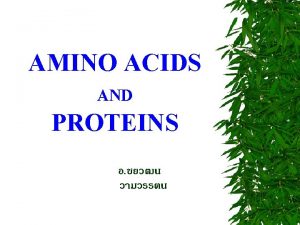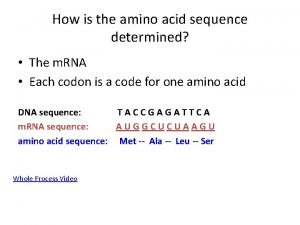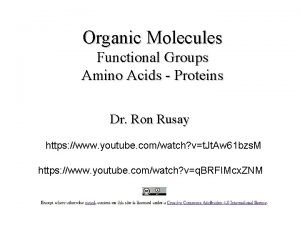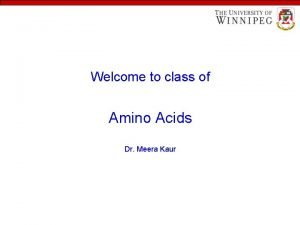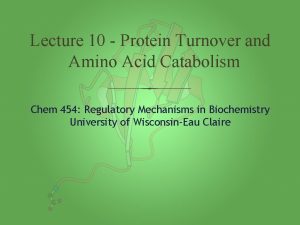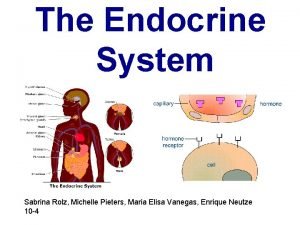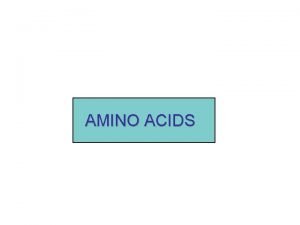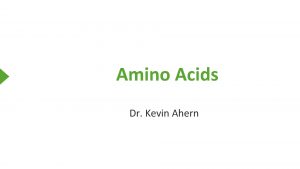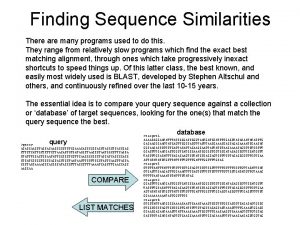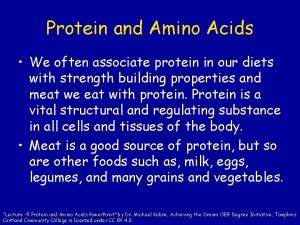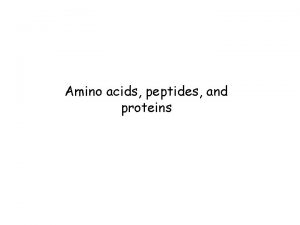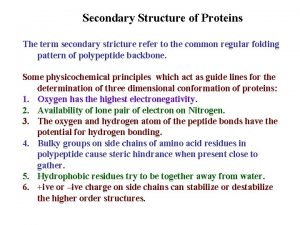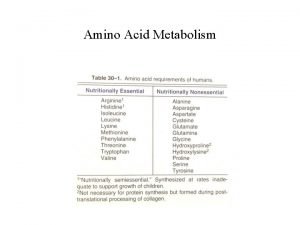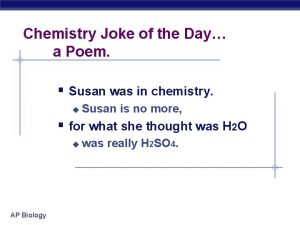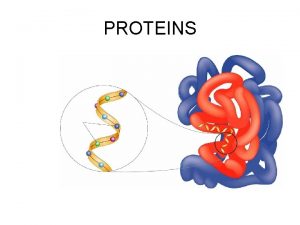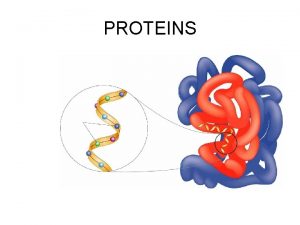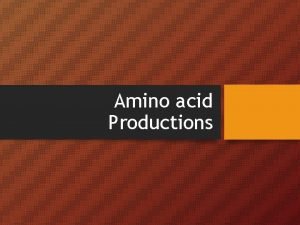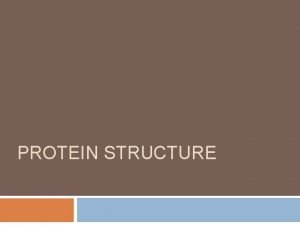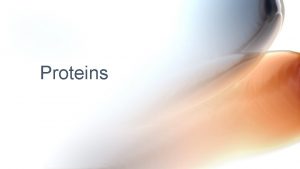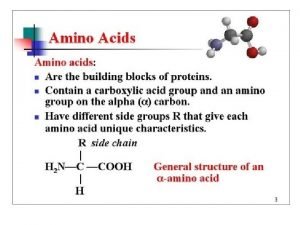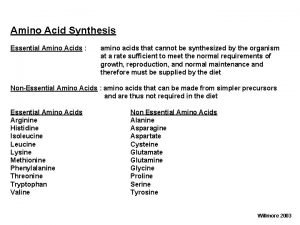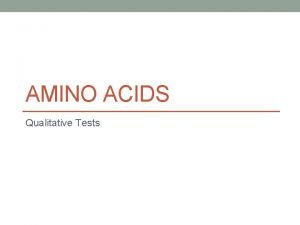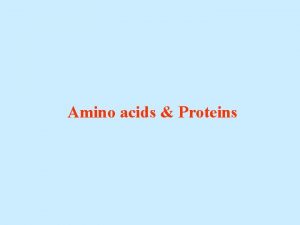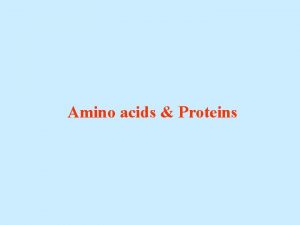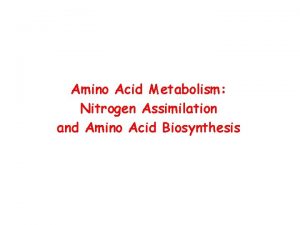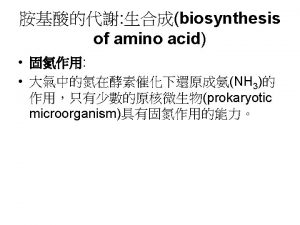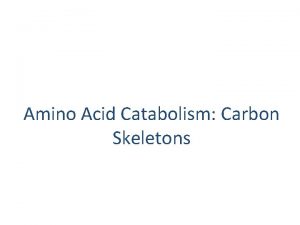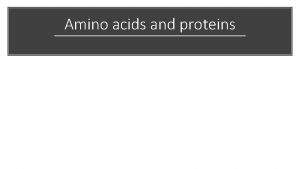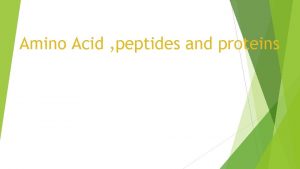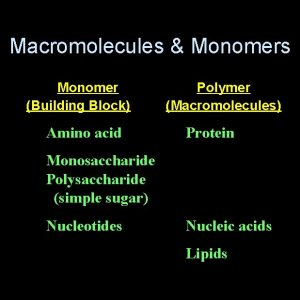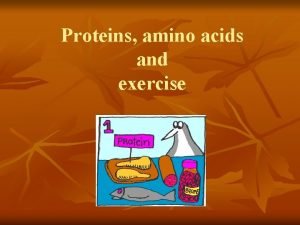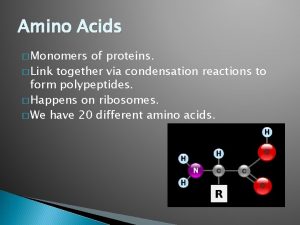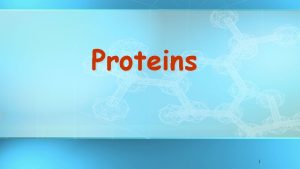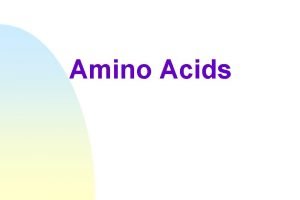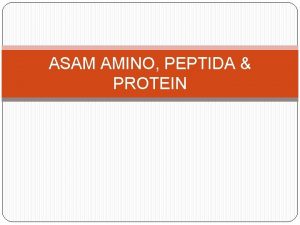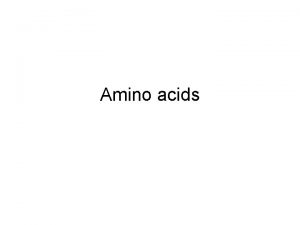PROTEINS Amino acid monomers to proteins Long chains

























- Slides: 25

PROTEINS

Amino acid monomers to proteins Long chains acids linked together in a Aminoof acidsamino linked together specific order make a specific protein.

Elements of proteins • • • Carbon Hydrogen Oxygen Nitrogen (and sometimes Sulfur) • Protein comes from the Greek word protos, meaning "first. " These nutrients are the basic elements of living cells, of first importance.

Some Amino Acids like Methionine require sulfur as well as CHON.

PROTEIN MONOMERS = AMINO ACIDS What is the same about each…What is different? Amino acid with the “R” Group not specified The amino acid Alanine Draw one example The amino acid Serine

The different “R” groups give different amino acids different characteristics. 3 MAIN JOBS OF PROTEINS • Structure • Enzymes (affect rate of reactions) • Transport (protein channels & hormones)

3 MAIN JOBS OF PROTEINS 1. Structure some proteins provide structural support: collagen, hair

2. Enzymes (affect rate of reactions) Enzymes speed up reactions.

Enzymes only work in a narrow range Of PH and Temperature.

p. H refers to how many hydrogen ions a substance has.

p. H refers to how many n a substanc p. H refers to how many hydrogen ions Acids have lots of H ions. Hydrochloric acid in our stomach has…. _____ of _____ _Ions__. If something is acid its p. H number is a number below 7.

Acids and Bases An acid produces H+ A base absorbs H+

3. Transport (protein channels) Transport molecules across cell membranes.

3. Transport Hormones Some hormones are proteins; insulin and growth hormones are 2 examples. Hormones serve as chemical messengers, carrying signals from one part of the body to another.

Hemoglobin protein transports oxygen in red blood cells.

We saw how different proteins have different jobs, but how are different proteins made?

Just like letters of the alphabet can make thousands of words. RAT TAR ITS SIT 20 different amino acid monomers can make thousands of different proteins…

20 different amino acid monomers can make thousands of different proteins…

Which protein is made depends on … 1. Which amino acids it is made of 2. What order the amino acids are in.

Instructions for arranging amino acids into proteins are found in the DNA.

5 functions of proteins in plants & animals • • Controls rates of reactions (enzymes) Regulate cell processes Cell repair Transports materials in and out of cells • Fights disease Animals also use proteins to form bones and muscles, supplying raw materials

Foods rich in proteins • Meat, fish, eggs • Milk, nuts, soy products • These contain the 8 AA not made in your body

You can test for protein using biuret. Negative=blue Positive = purple

Warning disturbing pictures

What happens when you don’t get enough? • A deficiency of protein • • in the diet leads to 1. Weight loss 2. Anemia 3. Swollen abdomen 4. Graying of hair 5. Slow healing of wounds 6. Decreased resistance to diseases 7. Muscular pain 8. Overall retarded growth
 Monomers of proteins
Monomers of proteins Monomers that make up proteins
Monomers that make up proteins Which amino acids have ionizable side chains
Which amino acids have ionizable side chains Amino acids are joined together in proteins by
Amino acids are joined together in proteins by Once upon a time there was a little man
Once upon a time there was a little man Short short short long long long short short short
Short short short long long long short short short Amino acid structure
Amino acid structure Protein primary structure
Protein primary structure Amino acids
Amino acids Histidine catabolism
Histidine catabolism Neutral amino acids
Neutral amino acids How to determine the amino acid sequence
How to determine the amino acid sequence 20 amino acid structure
20 amino acid structure Amino acids classification
Amino acids classification Amino acid converted into
Amino acid converted into Hypotalanus
Hypotalanus Arginine amino acid essential
Arginine amino acid essential Alpha carbon amino acid
Alpha carbon amino acid Amino acid sequence
Amino acid sequence Nucleotide sequence vs amino acid sequence
Nucleotide sequence vs amino acid sequence Nitrogen balance definition
Nitrogen balance definition Amino acid structure
Amino acid structure Stricture of amino acid
Stricture of amino acid Protein absorption
Protein absorption Essential amino acid
Essential amino acid Biological macromolecules poem
Biological macromolecules poem
